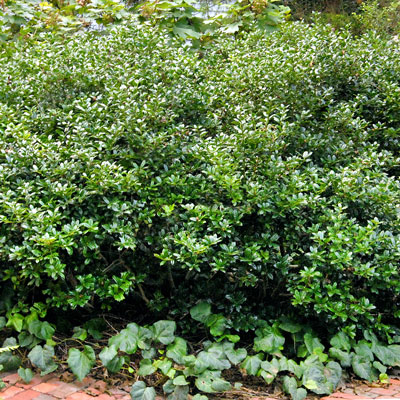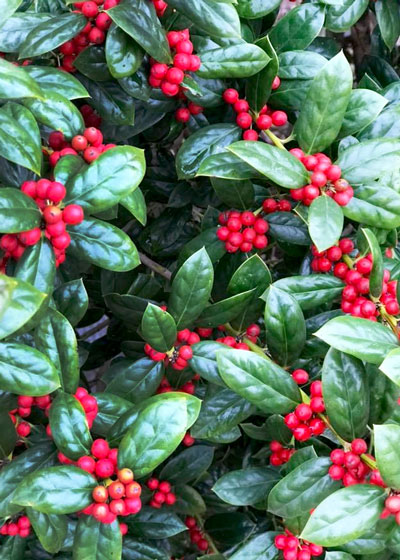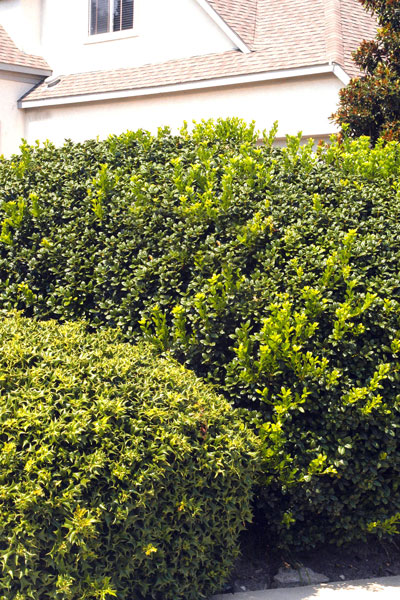A Most Popular Holly
If you took inventory of landscapes across Texas you’d probably find that dwarf Burford hollies are among the top 5 or 10 most common shrubs in our gardens. That’s with good merit. They’re happy to have a chance to perform in our gardens.

Things you’ll want to know…
• Available in all sizes of containers, from 1-gallon to 20-gallons and larger.
• Suited to full sun to full shade.
• Grow to 5 to 6 feet tall and wide, but can be maintained at 30 to 36 inches for many years.
• Evergreen, dark glossy green foliage.
• Winter-hardy to all but the coldest parts of the Panhandle.
• Well suited to South Texas as well.

• Produce masses of large red berries all winter every winter. Popular with birds.
• In spite of having one spine at the tip of each leaf, they’re certainly not threatening.
• One of Texas’ most easily maintained landscaping plants as long as you don’t let it get too dry between waterings.

Where did it come from?
I was curious when dwarf Burford holly came into the market so I pulled out Fred Galle’s fine book from Timber Press simply called Hollies.
Regular Burford holly came from seed of Chinese horned holly (Ilex cornuta) sent by the National Arboretum to T.W. Burford of West View Cemetery (wherever that is) in the early 1900s. So he grew regular Burford holly, itself a great plant.
Then decades later dwarf Burford holly was selected from masses cuttings in the Ferger Landscape Company (wherever that was or is – no good matches via Google) in 1947. They observed its much more compact habit of growth.
And the rest is history. From that one mutation at Ferger’s, millions are propagated each year in America.
